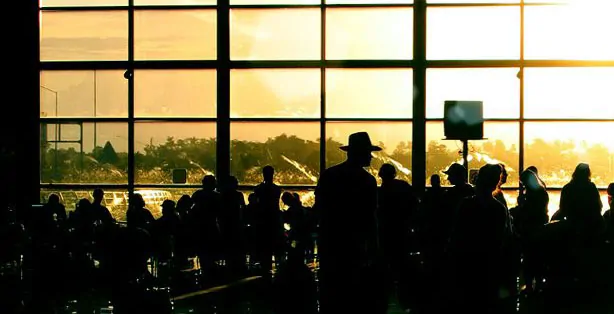
Every Tuesday and Thursday you can find Lucas studying Hungarian at the local coffee shop with a tutor. In two months, he takes off for a mission trip to Budapest. He wants to serve God—but not in the way you might expect.
The 24-year-old will be writing and designing for a mainstream travel magazine.
At first, Lucas considered participating with a well-known student mission organization. But after looking at other options, he decided his mission trip didn’t need an official Christian group to facilitate his learning and ministry adventure.
Lucas reflects an important trend: a new generation of young people—Christian and otherwise— interested in seeing the world, serving people and fulfilling their calling, but not necessarily in the time-worn ways of the past. With Lucas’ story as a backdrop, allow me to explain some of the significant realities that could shape a new era of missions trips.
Based upon some new research from Barna Group (where I serve as president), the problem is that missions trips are largely unexplored territory for most Americans, and their impact is mixed, at best. Yet, we have to rethink the role, purpose, structure and effectiveness of missions and learning trips with significant changes happening economically, spiritually, technologically and generationally. This is particularly important not only for connecting to younger people, but also for congregations that are trying to understand the heart of being missional communities and being more outwardly focused.
Short-Term Impact
The first insight from our research is that few Christians in America have much personal experience with missions, even the garden variety and most accessible form—short-term missions. A century ago, missionaries had to commit years, often a lifetime, to the missionary calling. But with the ease and affordability of travel over the last 50 years, church and nonprofit leaders innovated short-term mission trips. These journeys, typically lasting from a few days to several weeks, allow people to put their religious beliefs in action by taking people to areas of great need to serve the poor or disadvantaged.
However, despite the accessibility and personal benefits, most Americans have never experienced such a short-term service project. Just 9 percent of Americans have ever been on one of these brief trips, including only 11 percent of churchgoers. These are not just international trips; this percentage includes domestic service trips as well. In fact, about one-third of all short-term service trips done by American Christians are to locations within national borders.
To put all this in perspective, only one out of every 30 American adults has been on a short-term mission trip in the last five years, overseas or in country. Even among the most missions-minded people, evangelical Christians, just one out of four evangelicals had ever personally experienced a mission trip. If experience is the best teacher, members of the Christian community in America rarely put themselves in a position to experience real-life missional service outside of their comfort zones. In a moment, we will discuss how these patterns play out for young people, but let’s look for a moment at the perceived impact of missions.
Heart Change
The label “life-changing” is pasted on many things, but most participants say the description fits short-term service trips: only one-fourth of those who have participated in such a trip said it was “just an experience,” while three-quarters said it changed their life in some way. The most common areas of personal growth that people recall—even years later—include becoming more aware of other people’s struggles (25 percent); learning more about poverty, justice or the world (16 percent); increasing compassion (11 percent); deepening or enriching their faith (9 percent); broadening their spiritual understanding (9 percent); and boosting their financial generosity (5 percent). Others said the experience helped them feel more fulfilled, become more grateful, develop new friends and pray more.
Still, there are troubling signs about what some people negatively describe as “spiritual tourism.” One concern is that even though people describe very positive forms of personal change, it is somewhat surprising that the influence is not any deeper. For instance, doesn’t the fact that just 5 percent of short-term mission-goers said they increased their financial generosity seem painfully small? And shouldn’t more than 11 percent of people return from a mission trip having learned more about poverty, justice or the world—shouldn’t that be closer to 100 percent?
A second challenge is less obvious but perhaps most telling. Almost everyone who goes on a short-term mission trip says it changed their life. Yet, why do most participants only go once or twice in their entire life? Most of the people who have gone on such a journey did so more than five years ago. If these trips are such life-shaping events, why do most people wait years to go again, if at all?
A third problem of short-term missions is whether these brief bursts actually help or hurt those individuals and communities being served. There is a lot of healthy debate about this. Do our efforts create interdependence or codependence? Do we facilitate true transformation or a Messianic sense of influence? Our research does not directly address the influence of missions on those being assisted, but this is important. We need to evaluate our processes of ministry, looking squarely at reality, to see if we’re making the type of deep, lasting impact we intend. Of course, this glimpse in the mirror is driven by the knowledge that God ultimately measures whether our efforts and obedience please Him.
Missional Opportunities
What does missional innovation and living mean for us today? I’m considering that for our work at Barna. We’re worshiping more together as a team. We’re praying more for our vendors and clients. We’re trying to not be impressed with ourselves and be more in awe of God’s brilliance. We’re attempting to stay relevant and credible with mainstream culture without losing our core mission. And we’re searching for ways to make a deeper (rather than broader) influence with our work. These things are easier said than done, aren’t they?
I think it might be easier to learn Hungarian with Lucas.
A version of this article originally appeared in Neue Quarterly 03.






















